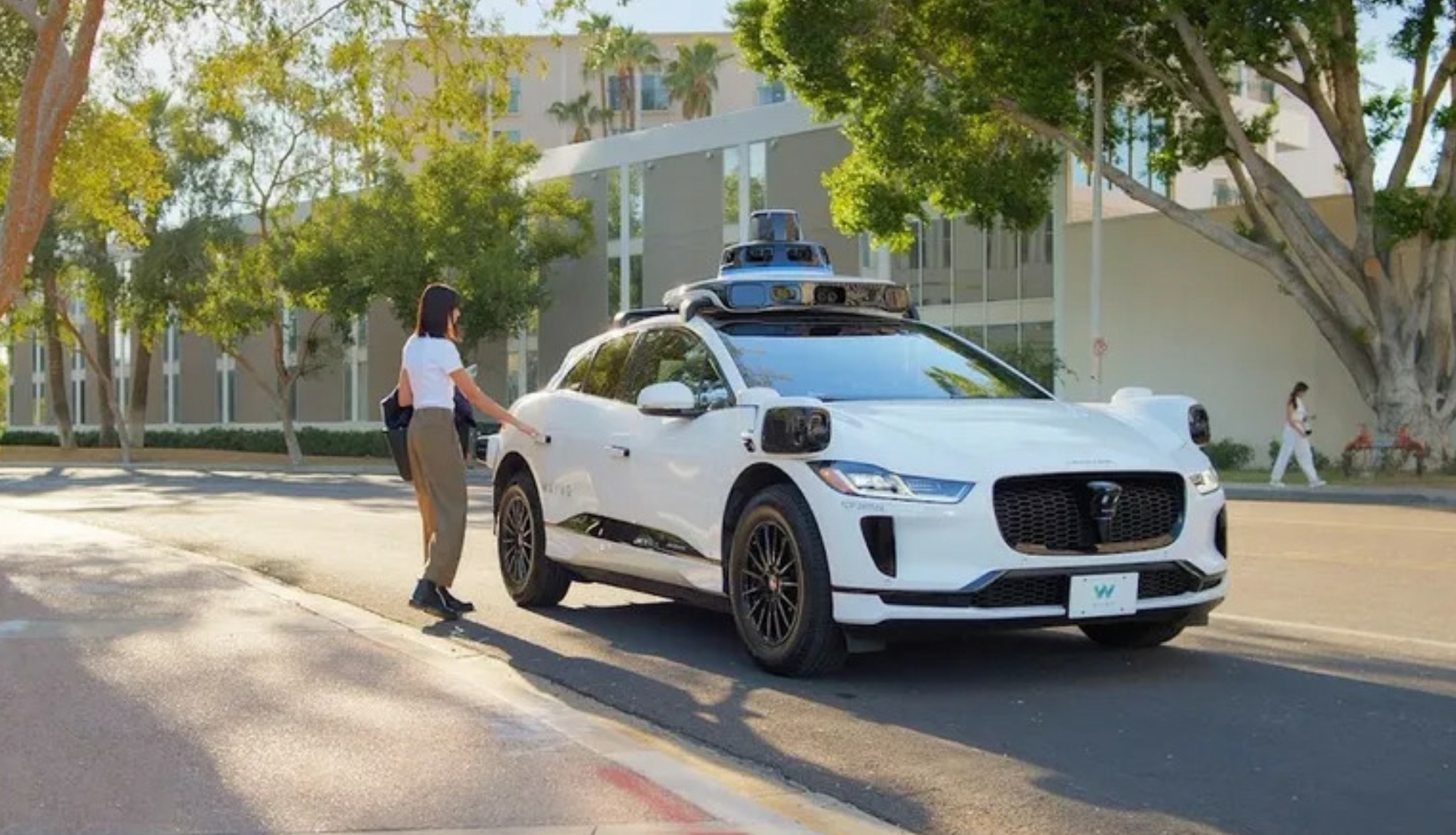
Automotive Content Professionals Network
Automotive Content Professionals Network (ACPN) in the automotive industry delves into the purpose, achievements, and ongoing goals of the ACPN, with guest contributions from ACPN chair Courtney Peddler, industry veterans Sam Russo and Joe Thomas.
The ACPN serves as a central hub for content professionals in the automotive aftermarket, encompassing everything from automotive data standards to cataloging practices. Representing both the automotive and off-highway sectors, the ACPN emphasizes education, inspiration, and connection within the industry. This approach has made ACPN a welcoming community that prioritizes collaboration and continuous improvement in data management. The ACPN is under the umbrella of the Auto Care Association, which manages the critical ACES and PIES standards that regulate data exchange.
One of the key highlights of the discussion is the ACPN Content Excellence Award, which opened for submissions this week. The awards, a significant accolade within the industry, recognize excellence in ACES and PIES data files. Winning these awards confers both prestige and recognition, elevating the status of the companies that prioritize quality data management. The ACPN Content Excellence Award is open to all manufacturers and catalogers, encouraging them to showcase their best-in-class data handling and cataloging practices.
The episode also sheds light on ACPN’s scholarship programs, a priority for Joe Thomas. This year, thanks to a sponsorship from United Motor Products, ACPN will expand its scholarship offerings to include Leadership 2.0, providing an excellent opportunity for new and seasoned industry members to enhance their skills. The scholarships aim to make ACPN’s resources and events accessible to a broader audience, reinforcing the organization’s commitment to education and industry development.
A central theme of the episode is the ongoing evolution of data in the automotive industry. The panel debates whether the industry has overcomplicated its data requirements. Sam Russo suggests that while complexity can enhance the user experience by building customer trust, there is also a need for clarity in distinguishing core data from proprietary information. The conversation highlights the challenges faced by retailers and content professionals in harmonizing data across fragmented platforms. The suggestion is made that the ACPN could lead efforts to establish baseline data requirements, reducing redundant information and fostering a more efficient data-sharing environment.
ACPN’s Connect Week, scheduled for May 12-15 in Phoenix, will provide another opportunity for content professionals to engage, collaborate, and celebrate industry achievements. The event serves as a critical gathering for those in automotive data and cataloging, offering a mix of workshops, networking events, and the anticipated awards ceremony.
As the episode wraps up, the hosts encourage listeners to consider ACPN sponsorship opportunities. Sponsorships support ACPN’s mission of enhancing data quality and educating the next generation of automotive professionals. Ranging from $1,000 to $10,000, these sponsorships enable ACPN to expand its initiatives, including awards and scholarships.
This podcast episode underscores ACPN’s role as a vital force in the automotive industry, promoting standards, advocating for data quality, and fostering a supportive community for content professionals. The discussion not only highlights ACPN’s achievements but also reflects on the future of data within the industry, emphasizing the importance of collaboration, transparency, and continual improvement.

Electric Cars Are Soulless and Boring
This is the common opinion of so-called gearheads and car enthusiasts on Reddit and other online forums. While electric cars offer over-the-top performance, especially when compared to their internal combustion counterparts, do they miss a key component: a visceral experience?
Which is a bit baffling because if you think about it, an EV could have any, let’s call it, engine sound experience as there is no engine sound to begin with. That is exactly what Johannes Luckemeier thought after driving his Tesla he just purchased. Due to his background in automotive sound design, he started tinkering with an app speaker combination to give the electric car its soul, more specifically a personalized soul. Fast forward 3 years, and the Glydsphere system is providing a highly personalized engine sound experience to Tesla drivers worldwide. The concept is simple and straightforward: a high-powered speaker with a remote-controlled power bank sits in the frunk, which means no installation, no hole drilling, or costly car modifications. The specifically engineered sound-designed speaker gets its sound wirelessly but in real time (it’s not Bluetooth) from a phone app that is based on a state-of-the-art game engine. The phone app receives signals from the car also in real time and wirelessly to know exactly what the car does and to dynamically change the engine sound experience just like a real engine does. With over 50 unique sound sets and growing, the Glydsphere system has a multitude of options to have any engine sound imaginable, from iconic race cars to intergalactic engine sounds to famous movie vehicles. If that’s not enough, you can create your own interactive sound sets and load them in the app. Additionally, the mother company of Space Gravity prepared a concept to create “real” electric engine sound without speakers or sound files; the concept is patent pending, of course, and meant for high-end electric sports cars.
To release the next generation of the product, which is mainly based on customer feedback, and work on the prototype of the new device to create real engine sound, Space Gravity with Glydsphere is raising money via an equity crowdfunding campaign on Microventures.


Why Business Intelligence Is Failing Auto Parts Sellers - And How To Fix It
Selling auto parts isn’t for the faint of heart. Selling auto parts isn’t for the faint of heart. Slim margins. Shifting prices. Thousands of SKUs to manage… staying profitable often feels like an uphill battle. But when everything clicks, the rewards are huge.
By 2024, most of us understand that a strong data strategy is key to smarter decisions and driving profitability. The problem? Business Intelligence (BI) tools still aren’t delivering on that promise.
Traditional BI tools aren’t built for the nuances of the auto parts industry. They don’t account for complexities like core charges or the fact that customers are buying solutions for specific year/make/model vehicles-not just parts. These tools throw a lot of numbers at you-revenue, sales volume, and sometimes even profit margins-but rarely connect the dots to show what you actually need to know and what to do next.
BI Tools: Flooding You with Data, But Offering Little Clarity
Most BI platforms take a “show you everything” approach, flooding you with dashboards and reports that are much easier to create than they are not actually navigate. Mostly only scratch the surface. Unless you know exactly what you’re looking for, it’s easy to feel lost the moment you log in, with no idea really where to start.
You need insights delivered to the right person, with the right context, at the right time—along with clear recommendations for what to do next. And those insights must be specialized, accounting for the unique needs of the auto industry and your specific role. Generic BI tools don’t consider this. Whether you’re dealing with slow-moving inventory or responding to shifts in demand, you need a solution that cuts through the noise and helps you focus on what matters.
That’s why we built Tromml—a BI platform designed specifically to help auto parts sellers uncover the insights that drive profitability. Like a mining trommel that filters through dirt to find gold, our platform sifts through data to reveal valuable insights hidden beneath the surface.
Here’s a recent example: one of our clients, an eCommerce auto parts retailer, was struggling to understand which promotions were truly driving revenue and which were quietly eroding profits. Since their business involves a lot of kitting, traditional BI methods would have only shown overall sales trends without pinpointing how specific promotions were impacting margins or individual SKUs. With Tromml, they were able to quickly drill down into the data and identify which promotions were working and where they needed to make adjustments. That kind of clarity made all the difference.
AI as a Partner in Decision-Making, Not a Replacement
AI gets a lot of hype, and for good reason—it has the potential to transform how businesses use data. But here’s the catch: AI alone isn’t the solution. It’s a tool that, when applied correctly, enhances human decision-making rather than replacing it.
At Tromml, we use AI to deliver relevant insights and empower non-technical users to extract data and instantly generate reports or analysis. Our machine learning system continuously learns from your data and interactions, getting smarter at uncovering what matters most.
But AI isn’t magic. It won’t solve all your problems overnight, and it can’t replace the intuition you’ve built over the years. What it can do is surface critical insights faster, helping you act before it’s too late.
The future of BI in auto parts isn’t about more data—it’s about better, actionable insights tailored to your challenges. Whether it’s optimizing pricing, managing promotions, or identifying top-performing products, you need tools that filter out the noise and spotlight what matters.
At Tromml, we’re excited to help auto parts sellers turn data into decisions that drive profitability. As AI evolves, BI tools will become even more specialized, but the goal stays the same: helping you thrive in a competitive market.
The bottom line? The days of relying on generic BI tools are over. For auto parts sellers, the future is in specialized, actionable insights—and that’s where we come in.
Visit: https://www.tromml.com/

Revolutionizing E-Commerce: How Versable’s AI is Transforming Auto Parts Product Listings
In today’s fast-paced and highly competitive auto parts market, manufacturers, retailers, and distributors face a common challenge: the need to create detailed, high-quality product listings that capture the attention of buyers while adhering to the stringent requirements of various e-commerce platforms. Versable has emerged as an industry leader in solving this challenge by leveraging cutting-edge artificial intelligence (AI) to generate market-ready product listings at scale. By simplifying and accelerating the process of product listing creation, Versable is helping businesses sell faster and more effectively across multiple platforms.
At the core of Versable’s innovative solution is its powerful AI engine, which takes a single part number and instantly generates comprehensive product titles, descriptions, and specifications in any required format. This automation eliminates the time-consuming and often error-prone process of manual product entry, allowing businesses to onboard new products and launch them for sale in a fraction of the time. Whether it’s a large-scale manufacturer with thousands of products or a smaller retailer trying to keep up with ever-changing market demands, Versable ensures that product listings are not only created faster but are also optimized for success.
One of the key features that sets Versable apart is its ability to tailor product listings to the specific needs of its customers. The platform incorporates brand-specific voices and integrates relevant search engine optimization (SEO) keywords into every listing. In a market where nearly identical products from various brands flood the marketplace, these optimizations can make all the difference. By ensuring that product listings are not only informative but also discoverable, Versable helps its customers stand out from the competition and increase their visibility, ultimately driving more sales.
The impact of Versable’s AI-driven solution extends beyond just time savings and SEO benefits. By automating the creation of product listings, Versable enables its customers to scale their operations more efficiently. This means businesses can quickly expand their product offerings and reach a broader customer base, all while maintaining consistent quality and adherence to platform requirements. Whether selling on a major marketplace like Amazon or distributing through specialized channels, Versable ensures that businesses are equipped to sell more, faster, and on more platforms than ever before.
Versable’s innovative approach has attracted significant attention from top investors, raising $2.6 million in funding from prominent venture firms such as Y Combinator, Bling Capital, Soma Capital, and Canaan Partners. This backing not only speaks to the confidence the investment community has in Versable’s technology but also provides the company with the resources to continue refining and expanding its platform. In addition to this funding, Versable has garnered widespread media coverage, being featured in major publications like USA Today, LA Weekly, and Pulse 2.0. These accolades reflect the growing recognition of Versable as a game-changer in the auto parts and e-commerce industries.
As the demand for faster, more efficient product listing creation continues to grow, Versable is well-positioned to lead the way in transforming how auto parts businesses manage their online presence. With its AI-powered platform, tailored brand voices, and SEO optimization, Versable is not just helping companies generate product listings – it’s empowering them to succeed in a competitive digital marketplace.
The Future of Electric Vehicles: How Battery Innovations Are Shaping the Road Ahead

A Growing Movement Toward Electric
Electric vehicles (EVs) are no longer a futuristic concept—they’re quickly becoming the norm. Over the last decade, the EV market has exploded, driven by a shared global goal to cut carbon emissions and embrace greener transportation. Major automakers are pledging to transition away from gas-powered cars, while governments around the world offer incentives to encourage people to go electric. Yet, despite this momentum, challenges like high costs, limited charging infrastructure, and concerns about range still loom large. The key to overcoming these hurdles lies in one crucial component: the battery.
Batteries Are the Game-Changer
Batteries power more than just EVs—they power the future of sustainable transportation. Right now, lithium-ion batteries dominate the industry, and they’re getting better every year. They’re becoming cheaper, lighter, and capable of holding more charge. But the real excitement lies in what’s coming next. Solid-state batteries, for example, could change the game with faster charging times, longer ranges, and improved safety. Even more experimental technologies, like lithium-sulfur and silicon-anode batteries, promise breakthroughs that could make EVs go farther than ever before. These advancements are critical for easing concerns about range and reliability, making EVs a more attractive choice for everyone.
Sustainability Matters More Than Ever
As we charge toward an electric future, it’s clear that we need to do so responsibly. The materials used to make EV batteries—like lithium, cobalt, and nickel—come with environmental and ethical challenges tied to their mining and production. Thankfully, the industry is taking notice. Companies are working on ways to recycle old batteries, extracting valuable materials and giving them a second life. In some cases, used EV batteries are even being repurposed for energy storage in homes and businesses. These efforts help reduce waste and ensure that going electric is truly a step toward sustainability.
Driving Into the Future
The road ahead for EVs is filled with promise. With ongoing advances in battery technology, electric cars are becoming more affordable, practical, and environmentally friendly. It’s not just about the vehicles themselves—it’s about building a system that supports widespread adoption, from charging networks to smarter energy grids. The future of EVs isn’t just about technology; it’s about collaboration between governments, automakers, and innovators. Together, they’re paving the way for a cleaner, more sustainable world, where electric vehicles are not just an option but the obvious choice.
Self-Driving Cars: Breaking Down the Technology Behind Autonomous Vehicles

The Dream Becomes Reality
For decades, self-driving cars felt like something out of a science fiction movie, but today, they’re edging closer to our everyday lives. Imagine a world where cars drive themselves, drastically reducing accidents, cutting down on traffic jams, and giving people who can’t drive the freedom to get around. Companies like Tesla, Waymo, and Cruise are racing to make this vision a reality. However, building a car that drives itself safely and reliably takes a combination of cutting-edge technology and overcoming big challenges, from regulations to public trust.
Sensors: The Car’s Eyes and Ears
Self-driving cars rely on an incredible set of tools to “see” and “understand” the world around them. Cameras capture visual details like road signs and lane markings, while radar helps detect objects and measure their distance, even in rain or fog. Lidar adds an extra layer of precision by creating 3D maps of the environment. These sensors work together, feeding data to the car’s systems, which then interpret what’s happening in real time. This teamwork among sensors allows self-driving cars to spot pedestrians, navigate intersections, and react to unexpected events.
AI: The Brain Powering the Drive
Making sense of all that sensor data requires more than just raw computing power—it takes advanced artificial intelligence (AI). AI systems in self-driving cars are like their “brains,” trained on countless hours of real-world driving to recognize patterns and make decisions. These systems know when to brake, accelerate, or swerve to avoid a hazard. Thanks to machine learning, self-driving cars can even improve over time as they gather more data, adapting to new situations with remarkable speed and accuracy.
Moving Toward the Autonomous Future
While the technology is mind-blowing, there’s still a lot to figure out before self-driving cars become mainstream. Safety remains a top concern, as does the question of who’s responsible in the event of an accident. Governments are also working to establish rules for how these vehicles will operate on public roads. Despite these challenges, the progress is undeniable. With advancements happening every day, self-driving cars have the potential to transform transportation, making it safer, easier, and more accessible for everyone.




